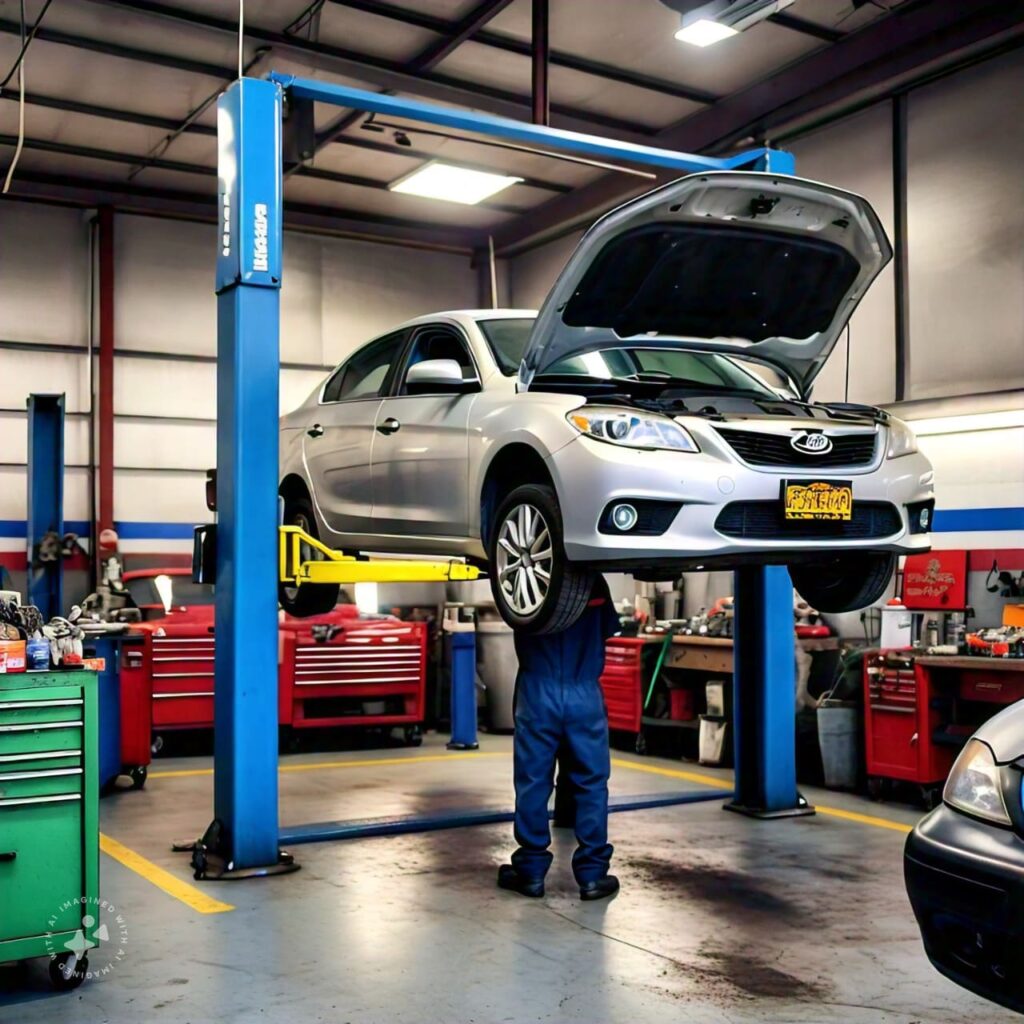When it comes to maintaining your vehicle, not all greases are created equal. Whether you’re a car enthusiast or simply looking to extend the life of your daily driver, understanding the best automotive grease is key. This guide covers everything from the benefits of synthetic grease to the nuances of selecting the right thickener. You’re going to learn what works best for different environments and ensure your vehicle gets the care it deserves.
Car Grease: A Comprehensive Guide for Beginners
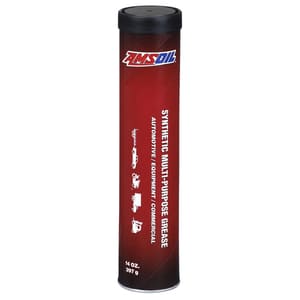
Grease is made up of three primary components: base oil, thickeners, and additives. The National Lubricating Grease Institute (NLGI) categorizes grease by its penetration levels, which measure consistency. Among these classifications, NLGI #2 is the most commonly used, especially in automotive and heavy-duty machinery. This type of grease is particularly well-suited for ball joints and various suspension components, providing essential lubrication for smooth and efficient operation.
If you’ve ever maintained your vehicle or worked with industrial equipment, chances are you’ve handled NLGI #2 grease. Its widespread use isn’t just due to availability; it’s a staple in many mechanical applications because of its reliability and superior performance. NLGI #2 grease is engineered to withstand extreme pressures and high temperatures, which are common in both automotive and industrial settings. This makes it an ideal choice for ensuring that moving parts operate seamlessly, reducing wear and tear, and ultimately extending the lifespan of the machinery.
While some might argue that other types of grease could serve the same purpose, NLGI #2’s balance of consistency and durability makes it uniquely effective. It offers a higher level of protection compared to lighter greases, which may not provide adequate lubrication under heavy loads. Conversely, greases that are thicker can sometimes impede movement, causing inefficiencies. Thus, NLGI #2 strikes an optimal balance, making it the preferred choice for many technicians and engineers.
In summary, NLGI #2 grease is not just a common product but a critical component in maintaining the functionality and longevity of various mechanical systems. Its formulation is designed to meet the rigorous demands of both automotive and industrial applications, proving its indispensability in a range of settings.
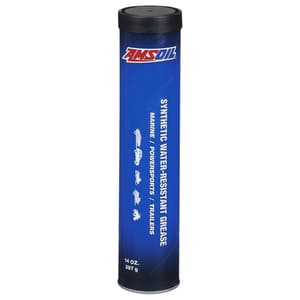
Grease grades range from NLGI #000, which resembles the consistency of cooking oil, to NLGI #6, with a density comparable to cheddar cheese. The classification system measures the consistency and thickness of grease, providing a standardized way to determine the appropriate type for various applications.
- NLGI #000: With a penetration consistency between 445 and 475, this grade is fluid, much like cooking oil. It’s typically used in situations where low viscosity is essential, such as in centralized lubrication systems.
- NLGI #00: Semi-fluid with a consistency range of 400 to 430, this grade is akin to applesauce. It’s commonly found in gearboxes and centralized lubrication systems where a bit more thickness is needed than NLGI #000.
- NLGI #0: Very soft, reminiscent of brown mustard, this grade has a penetration range of 355 to 385. It’s useful in colder environments where softer grease ensures better flow and lubrication.
- NLGI #1: With a penetration range of 310 to 340, this is soft like tomato paste. It works effectively in moderate temperatures and in applications where ease of pumping is required.
- NLGI #2: Known as “normal” grease, its consistency is similar to peanut butter with a penetration range of 265 to 295. This is the most commonly used grade in a wide range of typical industrial and automotive applications.
- NLGI #3: Firm like vegetable shortening, this grease has a penetration range of 220 to 250. It’s ideal for high-temperature applications and for sealing.
- NLGI #4: Very firm, much like frozen yogurt, with a penetration range of 175 to 205. It’s used where higher mechanical stability is needed, such as in heavy machinery bearings.
- NLGI #5: Hard with a consistency comparable to smooth paté, this grade has a penetration range of 130 to 160. It’s often employed in special applications requiring very thick lubrication.
- NLGI #6: Very hard, like cheddar cheese, with a penetration range of 85 to 115. It’s suited for areas that demand a grease with minimal flow, such as in certain types of bearings in high-load scenarios.
These classifications ensure that the appropriate grease is used, optimizing the performance and longevity of mechanical systems.
Performance Automotive Grease: Key Specifications Explained
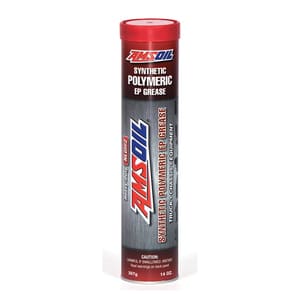
When choosing the right grease, it’s essential to consider the relevant specifications to ensure optimal performance. The grease industry sets specific standards for different types of grease based on their intended applications. For chassis greases, performance levels are classified as LA and LB, indicating their suitability for different load and temperature conditions encountered in various vehicle components. On the other hand, wheel bearing greases are categorized as GA, GB, and GC, each reflecting the grease’s capability to withstand varying levels of pressure and rotational speeds.
A grease labeled GC-LB signifies that the product meets the highest test standards for both chassis components and wheel bearings. This dual rating is crucial because it ensures that the grease can provide robust protection and performance across a wide range of automotive applications. GC-LB greases are particularly robust, often meeting or exceeding the stringent requirements set by most automotive original equipment manufacturers (OEMs). These greases ensure durability and reliability, even under harsh operating conditions, including high temperatures and heavy loads.
Opting for a GC-LB grease provides an assurance of quality and compatibility with your vehicle’s needs. It’s a prudent choice for maintaining automotive components because it reduces the risk of premature wear and tear, thereby extending the lifespan of critical parts. Additionally, using such high-standard grease can help prevent common issues like rust, corrosion, and excessive friction, which are detrimental to vehicle performance and longevity. By selecting a GC-LB grease, you’re not just ensuring the smooth operation of your vehicle’s chassis and wheel bearings, but also making an investment in long-term maintenance and reliability.
How to Select the Ideal Car Grease for Your Needs
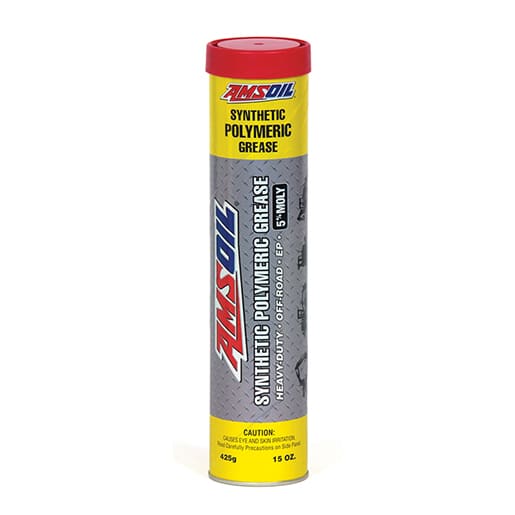
Factors influencing grease selection encompass several key elements. The thickener type, consistency, and dropping point are fundamental aspects to consider. Temperature range is crucial, as grease must perform under varying thermal conditions. Worked stability ensures the grease won’t break down under mechanical stress, while oxidation stability prevents degradation over time. Wear resistance is vital for protecting components from friction and damage.
The most critical attribute of any lubricant is its viscosity. This property dictates the lubricant’s flow characteristics and is selected based on the specific needs of the application. A common mistake is confusing grease consistency with the viscosity of the base oil; although related, they are distinct properties.
When choosing a grease, account for the application conditions, including the operating environment, speeds, and loads the machinery will encounter. Additionally, always adhere to Original Equipment Manufacturer (OEM) recommendations to ensure optimal performance and longevity of the equipment. Proper grease selection isn’t just about matching specs; it’s about understanding the interplay of factors that affect lubrication efficiency.
Rotating Bearings
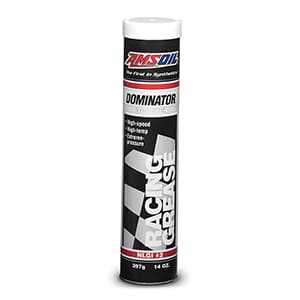
Grease plays a crucial role in numerous scenarios, each requiring specific types to ensure optimal performance. Rotating bearings include a wide array of components such as roller bearings, plain bearings, thrust bearings, gears, electric motors, presses, winches, bushings, wheel bearings, chassis lubrication, universal joints, ball joints, tie-rod ends, and steering knuckles. These parts are commonly found in both heavy-duty and light-duty applications within manufacturing plants, vehicles, trailers, as well as landscaping, agricultural, and powersports equipment.
Rotating bearings must be properly lubricated to avoid friction and wear, which could lead to equipment failure. Therefore, selecting the right grease is essential. For example, general-purpose greases like AMSOIL 100% Synthetic Multi-Purpose Grease is versatile and suitable for various applications, providing excellent protection and longevity. For environments exposed to water or moisture, Synthetic Water-Resistant Grease is highly recommended to prevent corrosion and maintain performance. In high-stress, high-speed conditions, such as racing applications, DOMINATOR® Synthetic Racing Grease offers enhanced wear protection and stability under extreme conditions.
Understanding the specific requirements and operating conditions of these components will help in selecting the most appropriate grease, ensuring reliability and extending the life of the equipment.
Bearings Under Heavy-Impact Loads
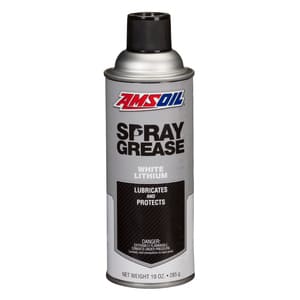
Bearings subjected to high-impact loads include heavily loaded components such as chassis grease points, wheel bearings, axle assemblies, universal joints, pivot pins, steering linkages, spring pins, king pins, ball joints, water-pump bearings, and other critical greased heavy-duty parts. These applications demand specialized greases designed for heavy-duty equipment working under extreme service conditions. Such conditions typically involve high pressures, exposure to water, and wide temperature fluctuations, making standard multi-purpose greases inadequate.
AMSOIL Synthetic Polymeric Truck, Chassis and Equipment Grease and High-Viscosity Lithium-Complex Synthetic Grease are formulated specifically for these rigorous applications. They offer enhanced protection by maintaining structural integrity under high pressures and resisting water washout, which is crucial for preventing corrosion and wear. Additionally, they maintain stability and consistency despite severe thermal fluctuations, ensuring longevity and reliability of the components they lubricate.
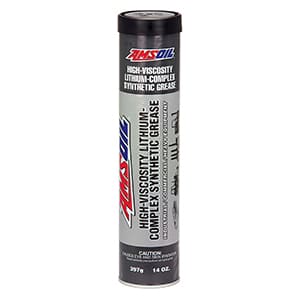
These specialized greases not only protect against mechanical wear but also improve the operational efficiency of the equipment. By reducing friction and providing a durable lubricating film, they help in extending the service intervals and reducing maintenance costs. Moreover, their advanced formulations are designed to stay in place, minimizing the need for frequent re-lubrication and ensuring that even the most demanding components receive continuous protection.
Non-Rotating Bearings and Sliding Applications

Non-rotating bearings and sliding applications involve a variety of heavily loaded components found in numerous types of machinery and vehicles. These include essential parts such as pivot pins, king pins, bucket pins, fifth-wheel hitch plates, and bushings—each of which must withstand significant stress and wear daily. Greases developed for these purposes offer exceptional protection, superior impact resistance, and remarkable adhesion, far exceeding the capabilities of general-purpose greases.
In demanding environments, these specialized greases ensure top-notch performance and durability under extreme conditions. For instance, pivot and king pins in heavy-duty trucks require a grease that can handle high loads and impact without breaking down. Similarly, bucket pins on construction equipment need protection against dirt, water, and heavy shocks to maintain consistent operation. Fifth-wheel hitch plates must deal with constant friction and heavy loads, demanding a grease that remains effective under these harsh conditions. Bushings in agricultural machinery also benefit from specialized greases that provide long-lasting lubrication despite exposure to the elements.
Among the leading recommendations are AMSOIL Synthetic Polymeric Off-Road Grease and Synthetic Polymeric Truck, Chassis, and Equipment Grease. These products offer robust reliability, ensuring that critical components remain lubricated and protected for extended periods, even in the most demanding applications. This ensures reduced downtime, lower maintenance costs, and prolonged equipment life, making these greases a valuable investment for any operation relying on heavily loaded, non-rotating bearings and sliding applications.
Specialty Applications

These involve equipment used in the food service or pharmaceutical sectors, which often operate under stringent hygiene and performance standards. They frequently require NSF-approved grease, like AMSOIL X-Treme Synthetic Food Grade Grease. This grease is engineered to perform efficiently across a wide range of operating temperatures, ensuring machinery remains functional and clean. Not all greases can handle the demands of specific applications. For instance, arctic drilling rigs require exceptional cold-weather performance. Standard greases often fail in sub-zero conditions, struggling to pump and protect machinery at freezing temperatures due to increased viscosity and decreased flow. AMSOIL DOMINATOR® 100% Synthetic Racing Grease stands out with its superior cold temperature properties, including extreme low-temperature torque performance capable of operating effectively down to -40°F. This makes it ideal for applications where reliable lubrication is critical, even in the harshest climates. Its advanced formulation ensures that it maintains viscosity and lubricating properties, providing consistent protection and performance when other greases would falter.
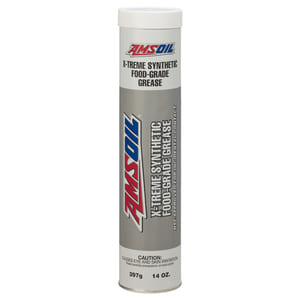
Determining the best automotive grease involves more than a quick pick; it requires an understanding of key factors like texture, thickener type, and the benefits of synthetic options. By mastering these aspects, you can significantly improve your vehicle’s performance. This guide equips you with the necessary knowledge to make an informed decision, ensuring you select the grease that meets your car’s specific needs. Optimize your vehicle’s function by investing in the best automotive grease available.

